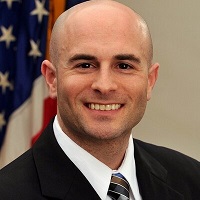 By Steven Posnack, M.S., M.H.S. / Director, Office of Standards and Technology
By Steven Posnack, M.S., M.H.S. / Director, Office of Standards and Technology
Twitter: @ONC_HealthIT
Health data often travels a long distance before it gets to its final destination. Additionally, data can be represented in a number of different ways. For example, health care providers can use health data at the point of care, researchers can use it for discrete data analysis or as part of a large research data set, and individuals can use it to better manage their care. Data can be converted, mapped, merged, and, let us not forget, ETL’d (extract, transform, load). So, how do we know if the data we have are reliable? Whether the source is known to us and trustworthy?
“Provenance” is the term most often used to describe the metadata, or extra information about data, that can help answer questions such as when and who created the data and how or if it was altered during information exchange. Data provenance provides the ability to trace and verify when and who created information, how it has been used or moved among different data sources, and how it is altered throughout its lifecycle. Similarly, increased use of provenance data by health IT systems may help improve the ability to identify erroneous information as well as support error identification, notification and correction both upstream and downstream, which in turn may lead to improvements in patient safety and data accuracy.
In the past 10 years, electronic health record (EHR) adoption has become more widespread across the healthcare industry– today 96 percent of hospitals and 78 percent of office-based physicians use certified EHRs – thanks to an increased use of digital data and a greater capacity to exchange it nationwide. With this growth comes an increasing availability of digital health tools and growing demand among consumers who want to share their data with their providers (often referred to as patient-generated health data, or PGHD). The need for health data provenance, and standard approaches to capture it, is an important priority. It is also worth mentioning that the Health IT Standards Committee has issued recommendations to ONC in the past on data provenance.
Data provenance is also a complex issue that plays a role in almost everything related to electronic data use and exchange. Thus, finding innovative and standardized solutions to improve and capture data provenance will enable the health care industry to better maximize health data that is already digitized and ready to share.
That’s why ONC is announcing the “Oh the Places Data Goes: Health Data Provenance” Challenge.
The challenge will be conducted in two phases. For Phase 1, participants must submit white papers that describe their current capabilities and methods used to demonstrate provenance of health data. Participants must also identify a problem they experience that inhibits the desired or necessary amount of provenance data to be conveyed during clinical care and propose a solution.
Only Phase 1 winners will be eligible to participate in the second and final phase, which involves the development and testing of their solution to the problem identified in Phase 1.
Prizes will be awarded at the end of each phase to the teams who best meet challenge requirements. A total of $180,000 in prizes will be available through the entirety of the challenge.
ONC will hold informational webinars to provide program details and answer questions. Visit the Health Data Provenance Challenge website for information on the webinars as well as contest details and instructions.
This post was originally published on the Health IT Buzz and is syndicated here with permission.
